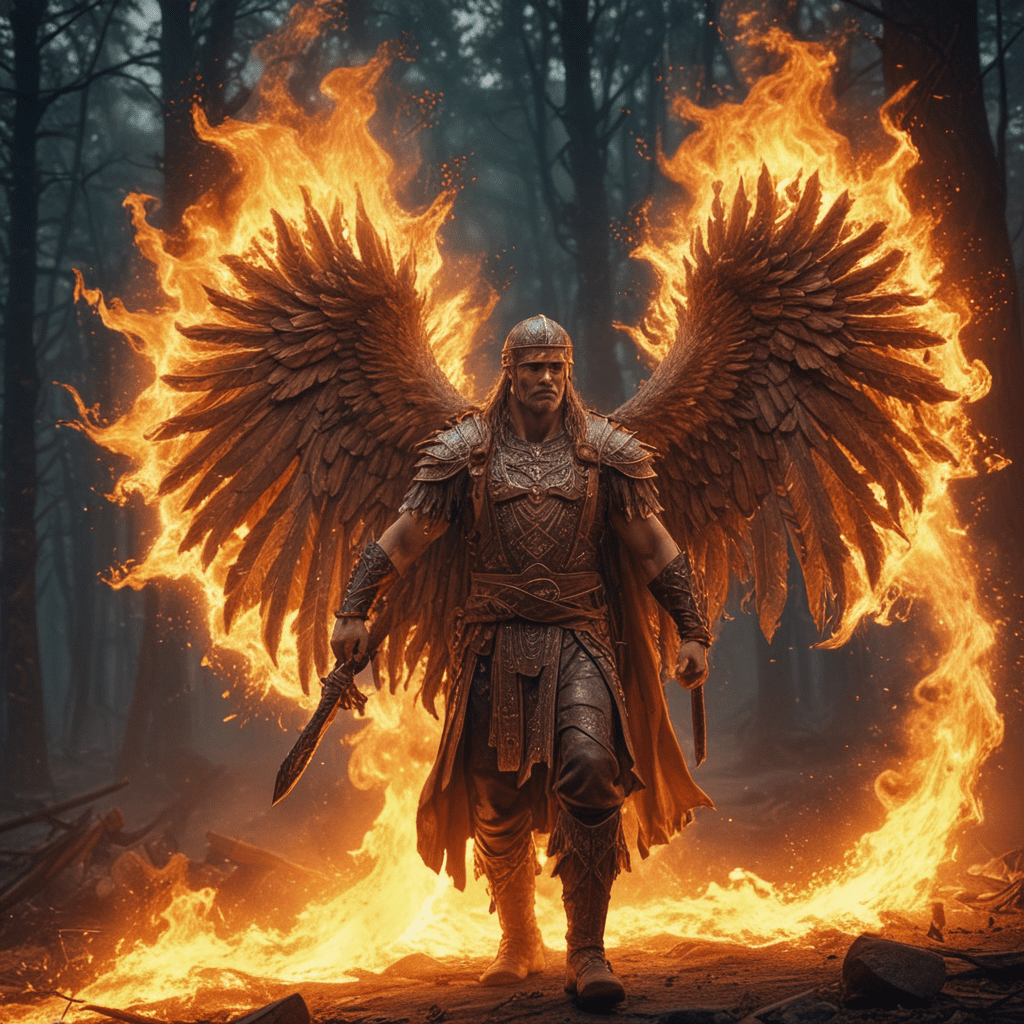Slavic Mythology: Beings of the Fire
1. Overview of Slavic Fire Mythology
In Slavic mythology, fire holds a significant place, embodying both creative and destructive forces. Fire deities, spirits, and creatures played crucial roles in Slavic beliefs and folklore, shaping the cultural landscape and inspiring reverence and awe. These fire-related beings were often associated with elements of nature, representing the sun, lightning, hearth, and forge.
2. The Firebird (Zhar-Ptitsa)
Among the most renowned fire creatures in Slavic mythology is the Firebird (Zhar-Ptitsa), a magnificent bird with vibrant plumage that shimmers with iridescent colors. Its feathers possess magical properties, capable of granting wishes and illuminating the darkest of nights. In Slavic tales, the Firebird is often depicted as a guardian of hidden treasures, its capture a perilous yet rewarding quest.
3. The Fire Serpent (Ognenny Zmey)
The Fire Serpent (Ognenny Zmey) embodies the destructive power of fire. This winged serpent, with its fiery breath and glowing scales, represents the untamed forces of nature. In Slavic mythology, the Fire Serpent is often associated with droughts, wildfires, and other catastrophic events. Legends tell of heroes who battle the Fire Serpent, seeking to protect their people from its devastation.
4. The Fire Horse (Ognenny Kon')
The Fire Horse (Ognenny Kon') is a swift and fiery steed that symbolizes strength and courage. Its mane and tail blaze with flames, and its hooves strike the ground with the force of thunder. In Slavic folklore, the Fire Horse is often depicted as a companion to heroes and warriors, carrying them into battle and aiding them in their quests. Its presence brings both victory and the transformative power of fire.
5. The Fire Ox (Ognenny Vol)
The Fire Ox (Ognenny Vol) is a formidable creature, with a body made of molten rock and horns that emit fiery sparks. Its hooves pound the earth, causing earthquakes and eruptions. In Slavic mythology, the Fire Ox represents the destructive force of volcanoes and the untamed power of the underworld. Its appearance is often seen as a harbinger of impending chaos and upheaval.
6. The Fire Rooster (Ognenny Petukh)
The Fire Rooster (Ognenny Petukh) is a fiery representation of the sun and dawn. Its golden feathers shimmer with the warmth of the rising sun, and its crowing heralds the arrival of a new day. In Slavic mythology, the Fire Rooster is often associated with fertility and prosperity, bringing blessings to those who hear its call.
7. The Fire Dog (Ognenny Pes)
The Fire Dog (Ognenny Pes) is a loyal and protective creature that symbolizes the hearth and home. With its fiery eyes and blazing tail, it guards the family against evil spirits and misfortune. In Slavic folklore, the Fire Dog is believed to bring good luck and prosperity to those who treat it with respect.
8. The Fire Cat (Ognenny Kot)
The Fire Cat (Ognenny Kot) is a curious and magical feline that represents the transformative power of fire. Its fur glows with a warm, fiery light, and its eyes possess an otherworldly gleam. In Slavic mythology, the Fire Cat is often associated with knowledge and wisdom, guiding those who seek enlightenment.
9. The Fire Dragon (Ognenny Drakon)
The Fire Dragon (Ognenny Drakon) is a formidable and awe-inspiring creature that embodies the majesty of fire. Its scales shimmer with a fiery glow, and its breath can melt mountains. In Slavic mythology, the Fire Dragon is often depicted as a guardian of ancient treasures and secret knowledge, its presence bringing both danger and potential rewards.
10. Rituals and Beliefs Associated with Fire
Fire played a central role in Slavic rituals and beliefs. The hearth was considered the heart of the home, and the fire within was believed to protect against evil spirits. Slavic people celebrated special holidays dedicated to fire, such as Kupala Night, when bonfires were lit to celebrate the summer solstice. Fire was also used for divination, healing, and purification rituals.
FAQs
Q: What is the significance of fire in Slavic mythology?
A: Fire holds a significant place in Slavic mythology, embodying both creative and destructive forces. Fire deities, spirits, and creatures play crucial roles in Slavic beliefs and folklore, shaping the cultural landscape and inspiring reverence and awe.
Q: What is the Firebird known for?
A: The Firebird (Zhar-Ptitsa) is renowned for its vibrant plumage that shimmers with iridescent colors. Its feathers possess magical properties, capable of granting wishes and illuminating the darkest of nights.
Q: What does the Fire Serpent represent?
A: The Fire Serpent (Ognenny Zmey) embodies the destructive power of fire. This winged serpent, with its fiery breath and glowing scales, represents the untamed forces of nature.
Q: What is the symbolism of the Fire Horse?
A: The Fire Horse (Ognenny Kon') symbolizes strength and courage. Its mane and tail blaze with flames, and its hooves strike the ground with the force of thunder. In Slavic folklore, the Fire Horse is often depicted as a companion to heroes and warriors, carrying them into battle and aiding them in their quests.



